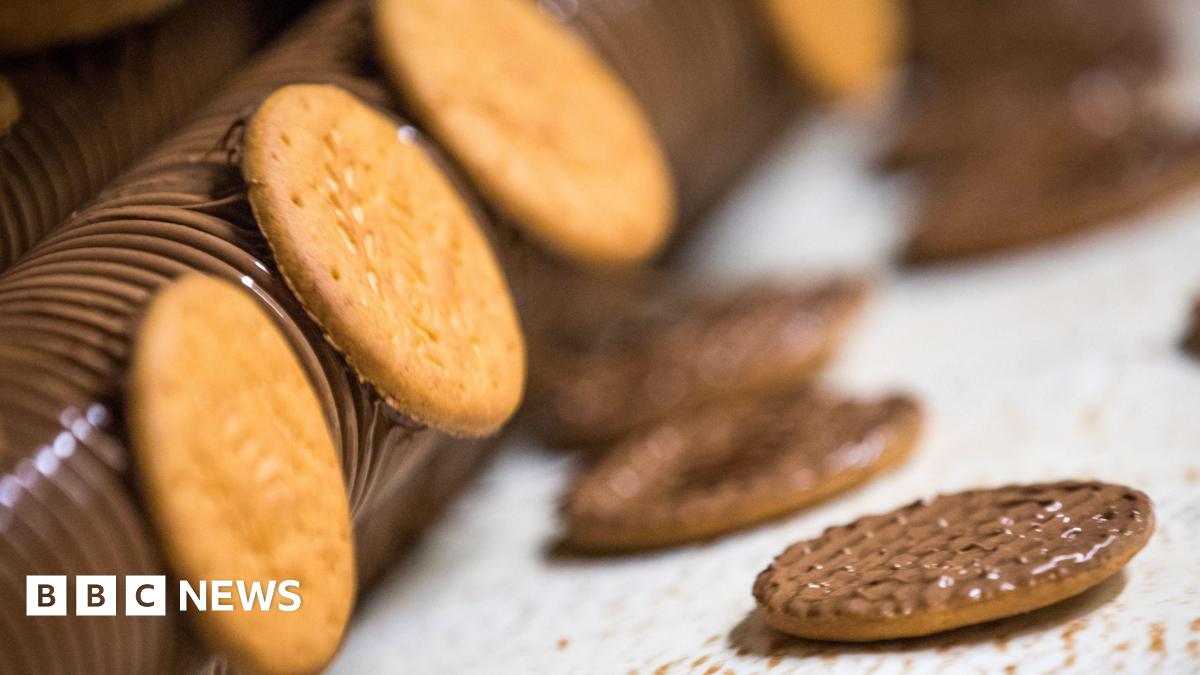Eating Chocolate Digestives Wrong? The 100-Year-Old Error
For over a century, we've been enjoying a beloved biscuit – the chocolate digestive. But what if we've been enjoying it wrong all along? A recent resurgence of online discussion has reignited a debate about the "correct" way to consume this classic treat, revealing a potential century-old error in our eating habits. This isn't just about dunking versus dry; it's about a fundamental misunderstanding of the biscuit's design.
This article delves into the history of the chocolate digestive, examines the ongoing debate about optimal consumption, and explores the surprising implications of this culinary conundrum.
The Digestive's Design: A Century of Misinterpretation?
The digestive biscuit, initially conceived as a healthier alternative to richer biscuits, owes its name to its purported digestive properties. The key lies in its structure: a firm, crunchy base designed to withstand dunking (a point often overlooked in the current debate), and a relatively thin layer of chocolate. This design, however, has been misinterpreted by many.
The common practice is to eat the chocolate digestive as a whole, biting straight through the biscuit. However, proponents of the “correct” method argue this approach ignores the biscuit's inherent design.
The "Correct" Way: A Layered Approach
The suggested alternative involves a layered approach. Instead of a single bite, the "correct" method involves:
- Separating the layers: Carefully peel apart the chocolate layer from the biscuit base.
- Individual enjoyment: Savor the chocolate layer on its own, appreciating its smooth texture and rich flavor. Then, enjoy the biscuit base separately, relishing its crunch and subtle sweetness.
This method, some argue, allows for a more nuanced appreciation of the individual elements that make up the chocolate digestive, highlighting the contrast between the crisp biscuit and the rich chocolate.
The Dunking Debate: A Separate but Related Issue
While the layered approach focuses on appreciating the inherent components, the age-old dunking debate remains a separate, yet fascinating, aspect of chocolate digestive consumption. Some believe dunking enhances the experience, while others maintain it ruins the biscuit's texture.
- Pros of Dunking: Softening the biscuit can make it easier to eat, and the combination of chocolate and warm beverage can be delightful.
- Cons of Dunking: Over-dunking can result in a soggy mess, destroying the biscuit's enjoyable crunch.
Ultimately, the ideal dunking method depends on personal preference and the chosen beverage. However, even when dunking, the layered approach can be employed to maximize the flavour experience.
The History Behind the Digestive: A Journey Through Time
The origins of the digestive biscuit trace back to the late 19th and early 20th centuries, a period focused on health and wellness. Understanding its historical context further illuminates the reasons behind its unique design.
- Early recipes: Focused on ingredients believed to aid digestion.
- Evolution of chocolate versions: The addition of chocolate created the beloved treat we know today, but arguably maintained the original intention for separate consumption of layers.
Conclusion: A Matter of Personal Preference?
Whether or not you agree with the "correct" method, the recent online debate highlights the personal nature of food preferences. There's no right or wrong way to enjoy a chocolate digestive, but exploring alternative approaches can add a new dimension to this classic treat. So next time you reach for a pack, consider trying the layered approach – you might be surprised by the result!
Keywords: Chocolate Digestive, Eating Chocolate Digestives, Biscuit, Digestive Biscuit, Dunking, Food Trends, Culinary Debate, Food History, 100-Year-Old Error, Layered Approach, Food Hacks
Call to Action: Have you tried the layered approach? Share your thoughts and experiences in the comments below!

